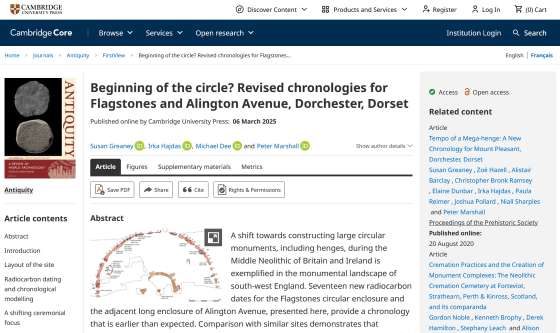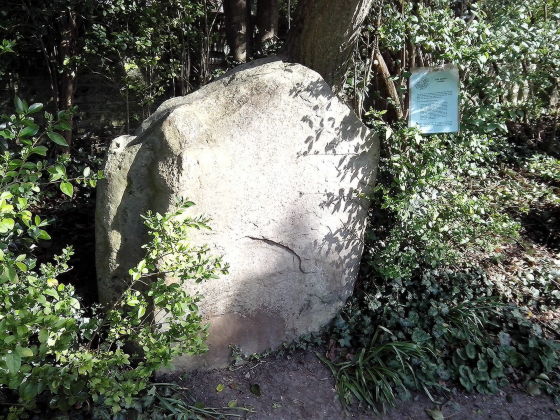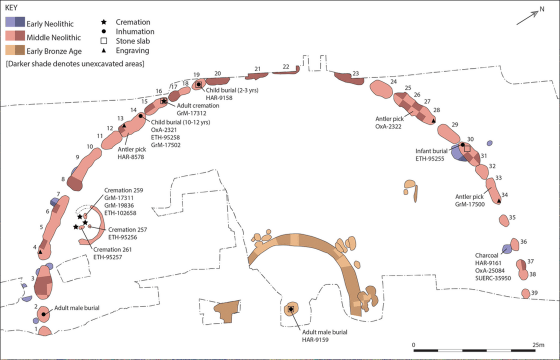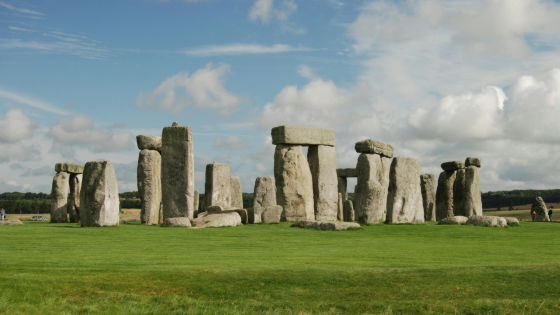New radiocarbon dating suggests Stonehenge may have been a replica of an older monument

Beginning of the circle? Revised chronologies for Flagstones and Alington Avenue, Dorchester, Dorset | Antiquity | Cambridge Core
https://www.cambridge.org/core/journals/antiquity/article/beginning-of-the-circle-revised-chronologies-for-flagstones-and-alington-avenue-dorchester-dorset/622950E4BA32F2729A0C830BFDCC8107

Innovative ancient burial site found to be older than Stonehenge - News
https://news.exeter.ac.uk/faculty-of-humanities-arts-and-social-sciences/archaeology-and-history/innovative-ancient-burial-site-found-to-be-older-than-stonehenge/
Could Stonehenge Be a Copy of This Even More Ancient Monument? : ScienceAlert
https://www.sciencealert.com/could-stonehenge-be-a-copy-of-this-even-more-ancient-monument
Flagstone is an archaeological site located on the outskirts of Dorchester in southern England, and the first remains, a megalith, were discovered buried in the garden of poet Thomas Hardy in 1891. Hardy named this stone the 'Druid Stone' and set it up on his lawn, but the rest of the remains were discovered during construction of a bypass road nearby in the 1980s, and it was discovered that the Druid Stone in Hardy's garden was part of a larger archaeological site.
Pictured below is a Druid Stone found in Hardy's garden.

Flagstone is a huge circular ditch about 100m in diameter, with some of the walls decorated with stone carvings, and at least four cremated bodies of adults and children found at the bottom of the ditch. Three cremated bodies were also found in a pentagonal hole inside the circular ditch, suggesting that it was at least partially constructed for funerary purposes.
The diagram below shows the remains of the western half of Flagstone, showing the numerous circular ditches.

The Flagstone is thought to mark the transition from rectangular and rectilinear monuments to circular monuments in Neolithic Britain, but the exact date of its construction is unknown. It was previously thought to be probably built at the same time as the early stages of Stonehenge, which was found nearby, due to its similarity to the earlier stages. Stonehenge is famous for its rows of megaliths, but it is known that the earliest stages were circular earthworks and moats like the Flagstone.
Now, a joint research team from
'The Flagstone is an unusual monument - surrounded by a completely circular ditch and associated with burial and cremation. In some ways it looks like the older monuments we call causewayed enclosures , and in other ways it resembles the later ones we call henges. But we didn't know where the Flagstone fits within these types of monuments,' said Dr Susan Greaney, a researcher in Neolithic and Bronze Age monuments at the University of Exeter.
A total of 23 artifacts, including human bones, charcoal, and tools made from deer antlers, were used in the analysis. Radiocarbon dating revealed that the earliest activity, such as digging a trench, occurred around 3650 BC, about 5,700 years ago. After a gap of several centuries, a circular trench was built around 3200 BC (about 5,200 years ago), and burials likely took place shortly thereafter. It is said that some of the bodies were buried about 1,000 years after the initial use of the Flagstone, suggesting that the Flagstone may have been in use for a long time.
The findings suggest that the Flagstone is even older than the famous Stonehenge and is probably one of the earliest stone circles built in Britain.

'The dating of Flagstone is essential to understanding the evolution of ritual and funerary monuments in Britain,' said Greaney. 'Flagstone's 'sister' monument is Stonehenge, whose first phase structure is almost identical, but Stonehenge dates to around 2900 BC. Was Stonehenge a copy of Flagstone? Or does this discovery suggest that the dating of Stonehenge needs revision?' he argued, raising new questions.
in Science, Posted by log1h_ik